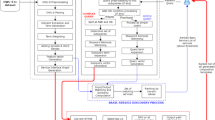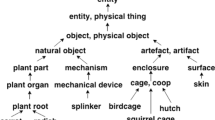Abstract
Currently, it is difficult to ensure the found services are optimal in web services discovery. Thus, we suggest that the applicant’s requirements be represented with Service Template (ST) in forms of constraint by adding ample semantic description to web services, and then ST is matched with Service Advertisements (SA) which have been published and saved in enhanced UDDI library, so we can get a set of candidate services, at last, we can find a optimal service from this set. This method can greatly improve the precision and efficiency of web services process, and focus more on how to select optimal service rather than to find a suitable one merely.
Similar content being viewed by others
References
Aggarwal, R., Verma, K.: Constraint Driven Web Service Composition in METEOR-S. In: Pro-ceedings of IEEE International Conference on Services Computing, pp. 1–4 (2004)
Horrocks.: SWRL, A Semantic Web Rule Language Combining OWL and RuleML (2003), http://www.daml.org/2003/11/swrl/
Author information
Authors and Affiliations
Editor information
Editors and Affiliations
Rights and permissions
Copyright information
© 2005 Springer-Verlag Berlin Heidelberg
About this paper
Cite this paper
Man, J., Yang, A., Li, J., Li, Q. (2005). Research on the Similarity of Constraint Driven Semantic Web Services. In: Grumbach, S., Sui, L., Vianu, V. (eds) Advances in Computer Science – ASIAN 2005. Data Management on the Web. ASIAN 2005. Lecture Notes in Computer Science, vol 3818. Springer, Berlin, Heidelberg. https://doi.org/10.1007/11596370_24
Download citation
DOI: https://doi.org/10.1007/11596370_24
Publisher Name: Springer, Berlin, Heidelberg
Print ISBN: 978-3-540-30767-9
Online ISBN: 978-3-540-32249-8
eBook Packages: Computer ScienceComputer Science (R0)




